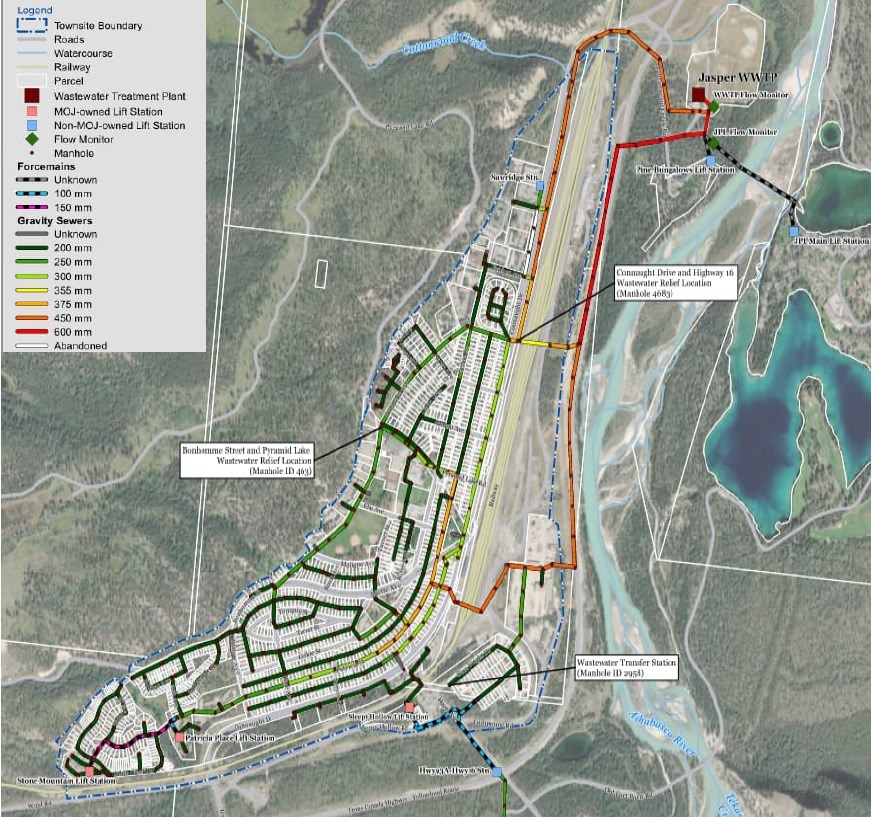Peter Shokeir | [email protected]
Jasper’s sewer system has capacity for future densification of the townsite, according to a wastewater modelling report.
WSP presented the report to council during its committee of the whole meeting on Nov. 8.
“When we conducted this study, part of the problems that administration wanted to ensure was with the push for densification and infill that we had system capacity to allow for expansion,” said John Greathead, director of operations and utilities for the Municipality of Jasper.
“One of the findings that we’re quite pleased to see is that, yes, we do have capacity.”
Jasper’s sewer system has 26.2 kilometres of gravity sewer mains, three lift stations and one kilometre of sewer force mains.
Parks Canada initially designed and operated the system, which was then turned over to the municipality upon incorporation in 2002.
More than 65 per cent of the sewers were more than 40 years old, with roughly 45 per cent of them composed of vitrified clay tile pipe rather than concrete or plastic.
WSP installed four flow gauges and a rain gauge for one month from late June to late July.
It also installed an additional flow gauge from late July to late August to specifically monitor the flows from the Parks Canada campgrounds.
There were no major rainfall events during the monitoring period, which limited the study’s ability to assess the extent and impact of groundwater infiltration into the system.
However, administration stated that this was a minor gap in data.
Jasper Park Lodge contributes as much as 20 per cent of the wastewater volumes to the wastewater treatment plant, according to the report.
The townsite and campgrounds primarily contribute the remainder.
Deficiencies found in the system include a sewer on lane west of Connaught Drive, south of Miette Avenue, and potentially a sewer on south leg of Stan Wright Drive, pending model improvements to verify results.
In addition, WSP looked at the 25-year growth scenario that predicted a population increase from 4,029 to 10,661 people, also predicting that three new developments currently in the proposal stage could bring in up to 1,617.
“We accounted for the increase in the population and found out the system has significant excess capacity currently and can accommodate what we think is the 25-year population horizon,” Juan Upegui with WSP told council.
“In other words, no additional deficiencies were identified in terms of capacity as described earlier.”
The report noted a few spots with improper grading that restrict flow and could cause flooding issues.
Continued work also needs to be done with CCTV to assess the condition of the wastewater collection system.
Committee accepted the report for information and directed administration to utilize the report in the development of a utilities master plan in 2023.




